Mike Vardy's Blog, page 103
February 3, 2014
The Next Move
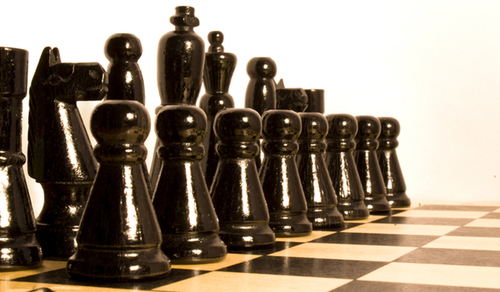
I've documented how I'm not a huge fan of starting the new year in January, so I took last month and prepared for the months to come. As someone who use energy levels as an indicator of what to do and when to do it, I actually find I'm more in rhythm with how the Chinese New Year works.
We've just entered The Year of The Horse, and 2014 is specifically The Year of The Wood Horse. I did a little bit of digging on what this year might mean astrologically, and here's a sample of what I found:
"The Wood Horse year is a time of fast victories, unexpected adventure, and surprising romance. It is an excellent year for travel, and the more far away and off the beaten path the better. Energy is high and production is rewarded. Decisive action, not procrastination, brings victory. But you have to act fast in a Horse year. If you are not 100% secure about a decision, then don’t do it. Events move so quickly in a Horse year that you don’t want to gallop off in the wrong direction." — via Susan Leviitt
I'm not a huge believer in astrological theories, but much of what is mentioned above resonates with me. It's not that I'm for being 100% secure in my decisions – I'd rather execute and tweak afterward then remain stagnant for too long — but I do think that without having some form of plan in place you can "gallop off in the wrong direction" and it can take a lot longer to find your way back with all of the things we've got on our plates.
I took last month to plan things out.
I scaled back on some projects, either adding them to my seldom-used "Someday/Maybe" context or eliminating them altogether.
I themed the remainder of my calendar months after that.
I took some time to outline what habits I really wanted to build in the months ahead, like getting in shape, and then formulated a plan to make that something I could connect with easier.1
I also rested...a lot.
Then I got ready to move forward with my next move.
That's where I find myself right now. I've got plenty of moves lined up. Some of them could very well be the next move I make, while others are going to have to wait their turn. The thing is, no matter what move you make next, you are going to have to make it. And if you have prepared accordingly for it, both in terms of planning and mindset, then it'll move you forward.
The next move isn't always the best move, but it has a much better chance of being so when you take the time to plan accordingly.
Photo credit: OeildeNuit via SXC.HU
1 By the way, I'm one week into the Focus T25 program and I’m liking it...so far.






 Related Stories3 Things You Can Do To Start A Year Of Action27 Days InThe 7 Key Habits of Productive People
Related Stories3 Things You Can Do To Start A Year Of Action27 Days InThe 7 Key Habits of Productive People
January 31, 2014
How To Build A Productive Blogging Strategy
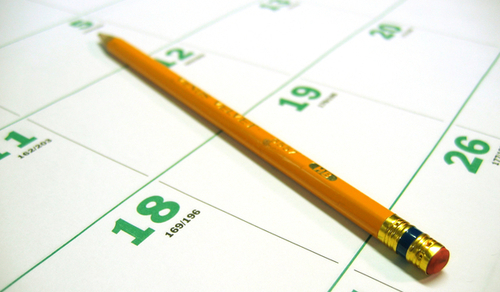
The following is a guest post by Alina Vrabie. Alina is a content creator at Sandglaz, where she writes about productivity, collaboration and work culture. She is always on the search for better lifehacks to simplify her and others' lives. Her personal motto: "If it can be dreamed, it can be done."
Blogging can be as stressful as it is rewarding. A great blogger offers readers great timely content and high quality writing. But sometimes you might find yourself having to sacrifice either the quality or speed of your blog posts.
You're not alone.
The project management triangle applies very well to blogging: you're always looking for the sweet spot between speed and quality content to provide great value to your readers. Bloggers need to be creative, but they also need to meet deadlines. Frankly, working under pressure can be quite the creativity killer.
Thankfully there are enough tools and techniques that can help you to write better content faster. Let's explore some of the things that will make your blogger's life easier.
Techniques
Capture
Do you ever find yourself struggling to remember that brilliant idea you had two days ago while you were doing your groceries? I know I do! That's why recording your brilliant ideas is so important. Capturing is how you will be able to generate more content ideas than you will ever be able to write.
Whether it's through a voice recorder, a text editor, a task management tool, or a dog-eared notebook, write down each and every idea. Not all of them will make the cut (and some will need quite a lot of polishing before they make it), but it's better to have too many ideas than none at all.
Research
Research might just be the most time consuming part of writing a blog. The thing is, the more you research, the more there will be left to research. You need to set a realistic limit for yourself. Ask yourself how you need to find out in order to provide my readers with accurate and up-to-date information. Even better, outline what you need to know and then go seek those specific answers.
If you do most of your research on the internet, a good practice is to keep your tabs to a minimum. Get what you need from the page, record the information and the source in a text file, and then close the tab. I've personally found that compiling information this way makes it easier to process it all and write the outline.
Also, keep in mind that research is ongoing. It's not about reading as much as you can about a topic in three hours and then regurgitating all that information back to your audience. Make research part of your lifestyle. Make it playful too, by including personal experiments in your research. This will also give your readers better content.
Outline
After you're happy with your research, it's time to move on to the outline. The outline is the skeleton of your blog post. If you don't have a good outline, you simply can't dress it up. Brian Clark from Copyblogger encourages bloggers to first write the headline before you start writing anything else. I think a good addition to this advice is to write the headers of each section of your post too. After all, what is the outline made of if not a collection of headers?
Divide And Conquer
Writing one thousand words can be intimidating, but not if you tackle manageable chunks at once. Focus on each header to write the different sections of your article. This will keep you focused on the writing and will help you to follow the old but useful 'one idea per paragraph' advice. This will also make it more readable for your readers.
Edit
This is something most bloggers don't spend nearly enough time doing. In print, there are several people involved in the editing process. But when it comes to the web, it seems there is a general assumption that content is fleeting. A grammar mistake here, a typo there don't really make a difference. Well, not so if you care about your reputation - whether you're just building one or trying to maintain it.
You should really set time aside to edit before you push the 'publish' button. Edit for content, style and grammar. And don't be afraid to move paragraphs around, add ideas or scrap them altogether if something seems off. Your readers will appreciate it.
Let Another Pair Of Eyes Go Over It
As a blogger, you're probably flying solo. From when you come up with your idea to when you hit 'publish', you are the only person to see your content. Having another person look at your post before you publish it will avoid mistakes such as typos. At best, these can be mild embarrassments, and at worst they can make people disregard all the hard work that you've put in your research and writing.
If you're on a tight deadline and can't get anyone to read over your post, then publish it but still have someone read it soon after (and hopefully before your article goes viral). Most readers will not let you know you have misspelt a word.
Apps
When it comes to apps for blogging, you should really keep it simple. Too many apps will clutter your workflow and ultimately your thinking. Your writing will take a hit for this. You really need very little to blog: a text editor, a voice recorder and an SEO software that will help you optimize your content.
Text Editors
Text editors are basically your blank piece of paper. Even though your writing depends fully on you, the right text editor will allow you to focus on getting the words out and shape your ideas in a meaningful way.
If you need a distraction free text editor, Ommwriter might be the solution for you. It's a thoughtfully designed environment that lets you shut down the world outside and focus on your words. It even stops desktop notifications while you're in the application. The backgrounds and sounds have been carefully chosen by the designers to create the perfect environment that will make you more creative and less antsy. Ommwriter is available for Mac, Windows, and iPad.
If you use Markdown, then you might want to give Notebooks a try. It works on Mac, Windows, iPad, and iPhone. This app can save you lots of time, as it uses your regular keyboard shortcuts for applying the Markdown formatting (for example, ctrl+b for bold). What's more, Notebooks syncs with Dropbox, so you'll easily access your files across devices. It does have some glitches, but it does the job. Notebooks is still in public beta and it looks promising.
A Voice Recorder
As a blogger, a reliable voice recorder can become your best friend. A voice recorder will allow you to record notes for yourself instead of having to write them down. It is also useful when you do interviews. Again, you should keep it basic here. The iPhone comes with its own Voice memo app, and it doesn't hurt that it got a nice makeover in iOS 7. For Android, Easy Voice Recorder does the job well. And if you're already using Evernote, you can take voice notes within the app on both devices.
SEO And Content Optimization
Creating great content that people want to read is great, but it's even better when your content is search engine friendly. When it comes to SEO and content optimization, it really depends how much you want to invest into it.
On the high price end of content optimization, we have Scribe. It's really a great tool that has keyword research and link building built in. For each post, it gives you an SEO score for the post and for how the post fits on the site as a whole. You can use it as a web app, a WordPress plugin, or even in Microsoft Word. The great thing about Scribe is that it is evolving as search engines evolve, helping you write great content.
On the low price end (as in free), we have WordPress SEO - provided your blog is on WordPress. While it doesn't offer everything that Scribe does, it is still a very powerful SEO tool that allows you to do almost everything you need.
As with anything, the more you blog, the more you will refine your practice. These tools and techniques are just a way to get started on becoming a more effective blogger.
What are some of your favourite tools and techniques that have made you a more effective blogger?
Photo credit: shadowkill via SXC.HU






 Related StoriesGoing Beyond Inbox ZeroThe Strikethrough System: A Simple Paper-Based Productivity ToolHow We Pulled Off a Huge Event Through Outsourcing
Related StoriesGoing Beyond Inbox ZeroThe Strikethrough System: A Simple Paper-Based Productivity ToolHow We Pulled Off a Huge Event Through Outsourcing
January 29, 2014
3 Things You Can Do To Start A Year Of Action
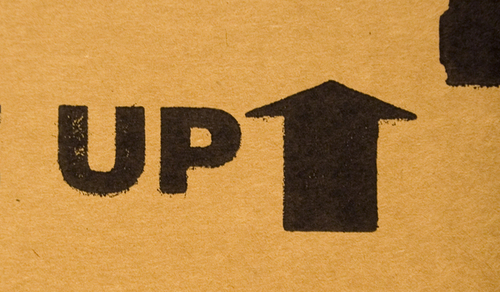
Let's say that you didn't exactly hit it out of the park with your resolutions this year. Let's say that you're getting ready to step up to the plate again. Let's say that you're ready to start over and really make this year a year of action. Whatever action you plan to take first, it's always best to plan accordingly and prepare for the journey ahead. After all, it's not an easy trek. Maintaining good habits and routines over the course of twelve days — let alone twelve months — is a challenge.
I take the time to build up three things to start a year of action during the month of January so that I can really take the twelve months to come to new heights. Rest assured, you can take these things and apply them at any time of the year, just like you can start the year you want anytime you want. But there's no time like the present, so why not explore one of them now and see where it leads you?
1. Connect Better With Your Actions
The first thing I do is find ways to connect better with my actions. This tactic works for actions that I know I really need to work on but struggle with and task that I need to work on but will take a tremendous amount of effort to complete, no matter how driven I am to achieve them.
One of the ways I connect better with my actions is through the use of meaningful contexts and tags. I've written about my use of contexts before, and by keeping them at a minimum I'm able to give them more focus and attention. You need to find variables that will add value to your actions so that they hold more meaning for you. Doing that will put you in a far better position to accomplish them.
I struggle with keeping up the habit of getting enough exercise. I've tried attaching energy levels to the task and other tricks like scheduling the time to complete the task, but that has never been enough. This time around, however, I've scheduled the time to exercise and found a program that speaks to my productivityist side. I found that through a program called Focus T25. The 25 minute program syncs up nicely with The Pomodoro Technique, which is a technique I use to push through tasks that I'm not necessarily fond of doing but know that I need to do.2 The timing works for me. The technique works for me. As a result, the exercise program has a better chance of sticking for me.
The single best way I've found to make your actions seem more critical to you is to make them more meaningful to you. By using contexts and looking inward, you'll create a better awareness for yourself. And that will lead to a better for yourself too.
2. Turn Things Down So You Can Turn Things Up
Saying no isn't easy, especially when you feel like you have a clean slate and a fresh timetable that is ripe for new opportunities to be explored. But things happen quickly as the days and weeks go by, and when you don't look at the big picture and assess things in a way that will put you in a position to achieve better results — as opposed to more results — then you're doing your work and your life a disservice. That's why you need to get better at turning things down.
My friend Patrick Rhone offered an incredibly wise quote in his book enough:
"Saying no is saying yes to other things."
He's absolutely right. But we all struggle with this. We want to please others. The problem is that when you take on too many things, you can turn the dial up on them all. The quality of every aspect of your life will suffer because you've simply taken on too much.
So evaluate your requests more effectively going forward. Don't be afraid to turn things down because doing so will allow you to turn things up. Quality over quantity is the goal here, and when you turn things down they're no longer something you need to take stock of and can focus on the stock you've agreed to carry.1
3. Be Selective With Your Attention
This goes beyond agreeing to take on certain actions, although this one can inform what actions you will and won't agree to handle. Being selective with your attention means that you decide what to work on and when to work on it, as well as what not to work on at certain times.
Anytime you work on something, you're clearly giving it attention. The question is, however, how much attention are you giving it? If you're not focused as much as possible — ideally 100% — on the task at hand, then something else has your attention. That's not ideal. Some things can't be turned off and might steal your attention form time to time, but others most definitely can be ignored. Email notifications, Facebook updates, and a ringing telephone are all things you can either give attention to or leave alone if you choose. Ultimately, attention boils down to choice. The choices can be made simpler by advanced setup or can be made in the moment.
My Three Words help me with my choices, as they inform me as to what is most important to me on the whole every time I refer to them. Those words were chosen in advance, leading me to make faster and better choices going forward. My heavy-lifting and light-lifting scheduling tactic also makes choosing what to give attention to far easier, nearly to the point of automation. My Idea Calendar (as featured in The NOW Year) guides my choices as well, allowing me to get unstuck when I'm not sure what to work on because there's an overarching theme to many of my months.
Intention without attention leads nowhere. Much like task and time, you shouldn't forsake one for the other.
A year of action is closer to being realized — when you use as many of the above three ways as starting points as you possibly can. Better still, if you take all three ways and keep them at top of mind throughout the year, you can go beyond just having a year of action...you can have a life of action.
And that's definitely a life worth living.
Photo credit: alifarid via SXC.HU
1 Funnily enough, this is what Costco does and it works for them. Having worked there for over a decade I can attest to it, although the company's reputation speaks for itself.
2 I don’t use The Pomodoro Technique for much else, as it poses a problem for me in most areas.






 Related Stories27 Days InThe 7 Key Habits of Productive PeopleA Productive Life: Integrating Goals
Related Stories27 Days InThe 7 Key Habits of Productive PeopleA Productive Life: Integrating Goals
January 27, 2014
27 Days In
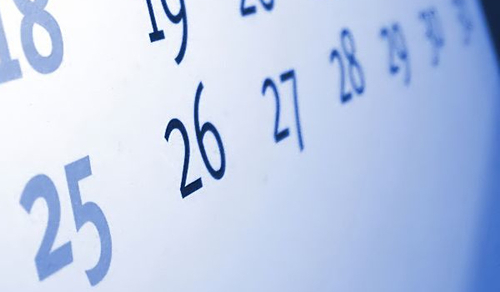
The following is an abridged excerpt from my latest e-book, The NOW Year: A Practical Guide To Calendar Management. As the last week of January is upon us, I figured that this short piece may help you be okay with any resolutions that may have fallen by the wayside and inspire you to tackle future resolutions in a more measured way going forward.
“Don't be fooled by the calendar. There are only as many days in the year as you make use of.” - Charles Richards
365 days. 52 weeks. 12 months. All of these add up to a calendar year in one form or another.
As I wrote about in The Front Nine, we tend to focus on the calendar in very constrained terms. We identify its length by the year we're in—not the year gone by or the year to come. We often cram a bunch of our tasks, projects, and ideas into the early stages of the calendar year and, once we realize we haven't hit the mark on some of them, we do the same for the tail end of the year.
Stop that.
When you try to cram things in, you don't think big. You think small. You think about how much you can fit in. Further to that, you try to figure out how you can fit things into an increasingly smaller space.
Stop that. Seriously.
Your year can start anytime you want to let it. You just have to be able to look beyond the numbers—the quantification—and look toward something else: the quality of what you do with those numbers. Your calendar habits are a critical component of task and time management. When your calendar is out of control — or too heavily controlled — you can be hurting your long-term productivity rather than helping it.
If you start using your calendar better now, you’ll find that your calendar will start helping you move forward every single day.
Photo credit: malko via SXC.HU






 Related StoriesThe 7 Key Habits of Productive PeopleA Productive Life: Integrating GoalsHow to Stop Time: My Talk at TEDx Victoria
Related StoriesThe 7 Key Habits of Productive PeopleA Productive Life: Integrating GoalsHow to Stop Time: My Talk at TEDx Victoria
January 24, 2014
Focus On The App Within
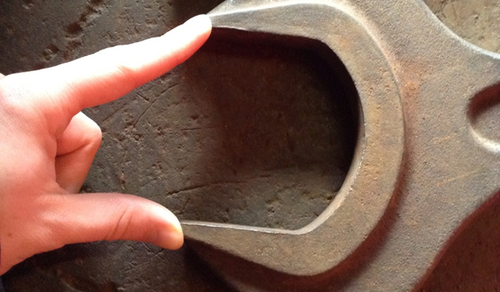
Brennen Reece wrote a great piece this week describing the way he gets things done. The Bullet Journal has become popular with paper-based system fans because it is pretty simple, scales, and is flexible to a point. Systems like Patrick Rhone's Dash/Plus and my Strikethrough System work well for their respective users because, like The Bullet Journal, they offer something that really does help with the building of a foundation – or a "trusted system" as David Allen would say.
There are a ton of task management apps out there. I'd go as far as to say there are too many for the person who wants to use one because they wind up spending a ton of time exploring their options instead of really getting familiar with one and sticking with it. I've used many of these apps, and I still do experiment with them because that's part of the work that I do.
But it's not all of the work that I do.
Over the past several years of building up my expertise in this field, I've built an internal foundation. I know what works for me and what doesn't, and I know how to bend an app or tool if I really want to use it. I also know when a tool or app just won't bend the way I want it to, and I abandon those ones soon after putting through the paces.
Ultimately – and for the lack of a better term – I've learned to focus on the app within.
No tool will get the work done for you, regardless of how much "front end" work or setup you've done with it. No app will work exactly how you do, unless you build it yourself or bend it to fit your own way of working.1 No system will work effectively without someone to guide it that strongly believes in it.
So the next time you see a shiny new app, tool, or system, look inward first and let that inform your decision on whether or not you'll spend time exploring the unfamiliar. Taking time to do that won't just keep you moving...it will keep you moving in the right direction.
1 That’s why adding contexts to your tasks and projects is critical. Contexts - or tags - add value to your tasks/projects and give them more meaning. And when your tasks and projects mean more, you’ll find a system that enables you to accomplish them more readily.
Photo credit: ischerer via SXC.HU






 Related StoriesGetting Into Drafts and Launch Center ProWhat to Look for in Your First Task Management AppThe 2013 Productivityist Holiday Gift Guide
Related StoriesGetting Into Drafts and Launch Center ProWhat to Look for in Your First Task Management AppThe 2013 Productivityist Holiday Gift Guide
January 22, 2014
How to Be a Multitasking Genius
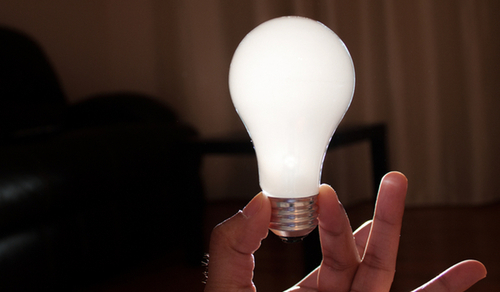
The following is a guest post by Robine Fisher, who is clearly a fan of multitasking. Robine graduated with a degree in International Studies and a minor in Journalism, but somehow she found herself proofreading for a dissertation service for a living. She starts every productive day with a nice cup of coffee. You can read more from Robine on Google+.
Experts have long said that multitasking decreases one's productivity. But no matter how many research results they release, individuals can't stop doing it. However, if you can't give up multitasking then byou need to be so incredibly good at it that you end up being as productive as anyone.
If you can't do things one at a time, train yourself to be a genius in doing multiple things at the same time. You probably won't master the technique in an instant, but as long as you learn from your mistakes and experiences, you can improve your habits along the way.
Here are some of the ways you can pave your way to being a multitasking genius:
Make a list of everything you need to accomplish. Don't make the mistake of leaving out a crucial task simply because you forgot. Before you work on multiple projects, list everything you need to do, even down to the most menial tasks. Place them under "general activities" or something similar. This way you won't miss anything. It's best to have a single notebook to track all your activities since one look at it will remind you of everything you have to do. Once you're done with one activity, cross it out so you won't confuse it with other tasks.
Plan your multitasking. Sometimes, multitasking is actually better than doing one task at a time. For example, a trip to the library can be more productive if you do your research for multiple papers at the same time. Students are often required to write multiple papers, and a single trip to the library is a lot more productive if they research all the topics simultaneously. So instead of just going there to research for a single essay they can work out their topics for all papers first so they can start they research. It's best to group similar tasks together. Even though you're multitasking, there's still a spirit of organization in your method.
Master The Pomodoro Technique. One of the reasons people multitask is because they can't handle doing a single task for a long period of time. With The Pomodoro Technique, you take a five minute break in between 25 minutes of working. You can use it to multitask by doing one task for the first 25 minutes and then another task during the next 25 minute cycle (or pomodoro). For example, you read and answer e-mails for the first 25 minutes and then after the five minute break, you start doing other work. That way time is divided equally for each task.
Allot proper divisions of tasks. Multitasking can be unproductive if you end up ruining the flow of your work. When writing a report, don't stop in the middle of organizing your data to do something else. Instead, finish organizing your data first before calling clients and answering to emails. After that you can start your report. Don't break your train of thought by stopping mid-stream because it's harder to get back on track if you do that. Finish your existing task before diverting your attention somewhere else.
Employ the help of time management apps. Don't torture yourself by struggling alone. Download productivity apps on your phone and computer to track your progress. Remember the Milk is a good app to create to-do lists. No task will be left unnoticed with it. Pomodoro.me can help you master The Pomodoro Technique. There are tons of time management applications, so choose the ones that will work best for you.
Multitasking has a bad rep, but you can turn things around. Be so incredibly good at it that you'll end up debunking all research stating its ineffectiveness, and stake your claim as a multitasking genius.
Photo credit: sufinawaz via SXC.HU






 Related StoriesThe Strikethrough System: A Simple Paper-Based Productivity Tool9 Ways to Become a More Productive WriterThe NOW Year and The New Year
Related StoriesThe Strikethrough System: A Simple Paper-Based Productivity Tool9 Ways to Become a More Productive WriterThe NOW Year and The New Year
January 20, 2014
There's Nothing Wrong with Being a Night Owl

I get tired of the argument that you should be an early riser to make the most of your day. I accomplish a hell of a lot as a night owl, and I know I'm not alone. In fact, as long as you're mindful and intentional about what you're doing, you can deliver the goods as an early riser or a night owl. You don't need to alter your body clock to make early rising a habit. I'd go as far as to suggest that by trying to alter your body clock instead of listening to it, you're doing yourself more than harm than good.
No matter when you get up in the morning, one of the things you need to do to is build routines that will allow you to make the most of your waking time. Before my wife goes to bed, I'll make sure that my clothes for the next day are set out for me for the next morning. Usually the clothing I set out are sweats so I can be dressed for exercise, which I'll tackle first thing. By putting out my workout gear before my wife goes to bed — she is the early riser in our house so she goes to bed before me – I've put myself in a position to think less about what to do first thing in the morning1 and can simply get up and go about the rest of my routine.
I don't work like others do when I start my day, either. I don't adhere to the "first things first" mentality that Covey preaches because my brain isn't ready to do the creative heavy lifting at that time. Instead, I like to get the low energy stuff out of the way. By doing that, I gradually build up my energy to where it needs to be for when I know i'm at my best — in the afternoon and evening hours. I'll spend time after lunch getting some heavier writing done, take another break from dinnertime until 9 pm or so and then get back into some creative work again. In fact, I'm writing this piece at 10:30 pm. I've planned to write it all day, and the wellspring of energy and creativity hit around thirty minutes ago and I've been writing it ever since. After I'm done writing this piece and preparing it for posting, I'll map out tomorrow, write my journal entry, and hit the sack. By the time all of that is done, it'll be nearly 1 am.
I know I have the luxury of getting up later than most people, but I've crafted my life that way over time. It wasn't something that I was always able to do. When I was working at Costco, there were months where I had to be at work at 7 am at the latest. Even then I had routines to start my day on the job, and I got the low energy stuff out of the way first thing. Once I was able to adjust my schedule so that I didn't need to be there so early, I did. I worked later and enjoyed it immensely. I'd get home from my work shift, have a late dinner, and then work on something creative until the wee hours of the morning. That's how I work best, and every time I tried to change my body clock to an earlier time period my quality of work would suffer.
One of the keys to being productive is to know yourself. Know what works for you and what doesn't. Be honest with yourself and be mindful about your habits and body clock tendencies. Ultimately, it doesn't matter whether you're a night owl or an early riser as long as you plan things out accordingly and support what works best for you. Failing to do that really puts you in that place of "doing" productive instead of being productive.
And that's no place to spend your time.
Photo credit: rknds via SXC.HU
1 I actually think one of the reasons so many people check their email first thing in the morning is because they’ve not planned their day in advance and there might be an email message that gives them the direction they are lacking. But that’s a topic for another post.






 Related StoriesA Productive Life: Integrating HabitsFocus, Forward, and Family: My Three Words for 2014Recognizing Opportunity in the Pursuit of Your Calling
Related StoriesA Productive Life: Integrating HabitsFocus, Forward, and Family: My Three Words for 2014Recognizing Opportunity in the Pursuit of Your Calling
January 16, 2014
A Productive Life: Integrating Habits
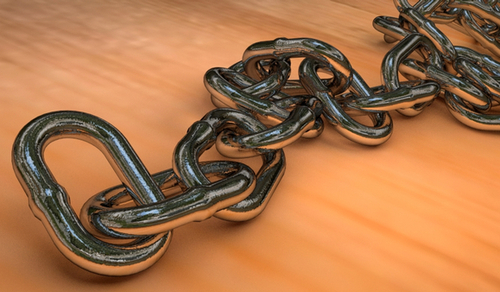
The following is the second in a series of guest posts on leading a productive life by Bojan Dordevic. Bojan is an Internet marketing professional with a passion for all things productive, and is the co-founder of Alpha Efficiency Magazine (I make an appearance in the second of issue of said publication). You can invite him for a Hangout on Google+ and follow him on Twitter or App.net.
Depending on the habits you currently have and the goals you want to pursue, there is an absolute necessity for you to choose your battles carefully. Unlike popular psychology claims, it takes more than 21 days to build a habit, and it very much depends on the complexity of the habit. Choosing the right habits at the right time has always been critical component of success for me, and the same goes for friends and family members I’ve coached about productivity over the past couple of years.
In order for habits to have any meaningful effect, they need to be in alignment with the goals you’ve designed for yourself. Every day is a battle, and pushing through with mandatory habits is the reason why some people succeed despite their shortcomings. Dedication to your goals and persistence gets things done. Your initial set of habits needs to support three areas of your life:
Health
Wealth
Relationships
The problem is that these are the habits that are hard to get on track. Some people struggle with these habits because they didn’t implement them to begin with, while others are in the process of acquiring them without a clearly formulated strategy and detachment from the negative outcome. Some people just don’t have what it takes to change (and I hope that you are not one of those people).
To combat this problem, numerous followers of self development, life-optimizing, and productivity started looking for a set of habits to drive those habits. Upon finding those "driving" habits, they end up designing an approach to systematically achieve their goals.
Integrating new habits into your life can be challenging, but it’s very well worth it. Habits aren’t something you do, they are something you become after a lot of repetition. Integrating a habit means changing oneself, and with every change there comes a price. You are the one who needs to determine if that price too steep for the dreams you want to achieve. Don’t be afraid of embracing your destiny through embracing the habits that you are integrating into your life plans and goals.
Taking care of your own destiny has never been easy, but the difference between those that make it and those that don’t is hidden in those little steps taken on a daily basis that get us one step closer to our destination.
Photo credit: bha100710 via SXC.HU






 Related StoriesFocus, Forward, and Family: My Three Words for 2014Recognizing Opportunity in the Pursuit of Your CallingThe Art and Science of Managing Expectations
Related StoriesFocus, Forward, and Family: My Three Words for 2014Recognizing Opportunity in the Pursuit of Your CallingThe Art and Science of Managing Expectations
January 14, 2014
Getting Into Drafts and Launch Center Pro
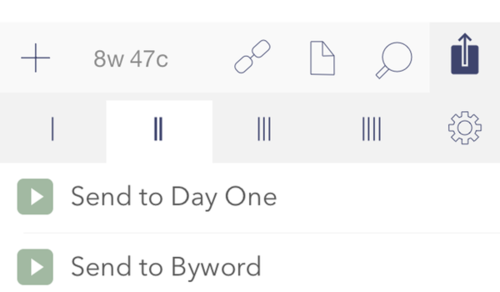
I've been using Launch Center Pro and Drafts on my iPhone for as long as they've been available. These apps make using my iPhone more efficient and, when set up properly, effective. I've not gone too deep into either app in terms of using URL callbacks and the like and I believe that those who've been exploring these apps may have steered clear because the advanced feature set may seem too complex to wrap their heads around. I'm no coder, so I can certainly appreciate that.
The thing is, you can really take advantage of Drafts and Launch Center Pro without spending time in those seemingly more complicated features. I've been using both apps very comfortably and effectively for a long time, so if you're looking at getting into Drafts and Launch Center Pro, I've outlined some ways to dip your toe into these two productivity boosting apps.
Launch Center Pro
Launch Center Pro has been around longer than Drafts, and while others I know have abandoned it some time ago I've stuck with it for one primary reason: ease of access to a ton of apps. Frankly, that's the main reason I added it to my app arsenal in the first place and the benefits of having an app like that is huge in terms of efficiency and, when used intentionally, effectiveness.
By using this app, I'm able to keep apps buried in folders that would otherwise need to be kept on my home screen or on my dock. Apps like Sleep Cycle, Rdio, and Downcast are prime examples of apps I use regularly that are listed in my Apps button in Launch Center Pro. I also still use Michael Schechter's excellent setup for OmniFocus fairly often, although not so much for capture as I use Drafts more for that sort of thing.
The big thing I access Launch Center Pro for regularly is for social networking apps. By keeping the ones I use (Tweetbot, Riposte, Facebook, Google+, Path, etc.) within Launch Center Pro, I have been able to keep my social apps buried in a folder several screens into my iPhone. I use Launch Center Pro to not only check the social networks, but to post to them as well. This limits my social networking activity to within one app, which means I know the place I go to check and update social networks is not in individual apps, but in Launch Center Pro.
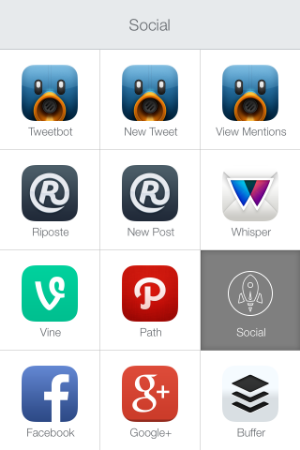
I've stopped using Launch Center Pro for most forms of capturing information, and as such don't really use it to launch any notetaking or writing apps like Evernote or Byword. That's where Drafts comes in.
Drafts
Drafts is the app I use to capture almost every written idea or thought on my iPhone (and on my iPad as well). It's the starting point for all reminders, journal entries for Day One, written posts bound for Byword, and any ideas or notes destined for Evernote.
Before you start using Drafts as your capture app, you'll want to do the following:
Only leave active the apps you plan to deliver captured items to. In my case, that meant removing/deactivating all social networking, communication, and calendar-type apps.
Assign panes (the places where action are stored) for each type of app so it makes deliver easier. I started out by only using one of the panes, but have since expanded it to more panes that feature certain actions and apps over others. For example, Evernote actions are all stored in the first pane, writing-based apps are stored in the second pane (featuring Day One, Byword, Quotebook, as shown in the image at the top of this post), and task-based actions are stored in the third pane. You can have up to four panes, which I'll start using once I start spending time using the advanced features like URL callbacks and so on.
There are certain things I don't use Drafts for, however. I don't use Drafts for messaging or email composition. Dispatch is my email app of choice and Messages works just fine for those purposes and I don't use Drafts for calendar entry. Fantastical works great on its own for that as well.
Once you've set Drafts up in a way that simplifies the capture process for you, I'd put ii in your dock. Drafts lives in my dock alongside Dispatch, OmniFocus, and Fantastical. (Launch Center Pro lives on my home screen as it isn't used as much as Drafts.) Then you're all set to really make use of Drafts in a way that that can really enhance your workflow. Get familiar with it, and then spend time getting into the more advanced aspects of it. A great resource to look at is Federico Viticci's wealth of posts over at MacStories and you can start adding more apps and actions directly from within Drafts using the Drafts Action Directory.
I've come to rely heavily on Drafts and Launch Center Pro, and if you start to use them in a way that works best for you initially you may very well find that they're going to work very well for you for a long time to come. Don't dive in too deep at first. Just spend time getting into them and you'll wonder how you did without them for so long.






 Related StoriesWhat to Look for in Your First Task Management AppThe 2013 Productivityist Holiday Gift GuideHow I Test Apps
Related StoriesWhat to Look for in Your First Task Management AppThe 2013 Productivityist Holiday Gift GuideHow I Test Apps
January 9, 2014
Going Beyond Inbox Zero
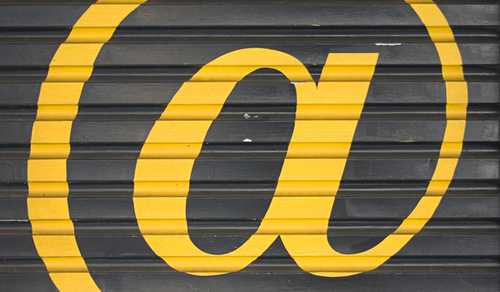
The following is a guest post by Harry Guinness. Harry is a web designer, photographer, publisher, entrepreneur, consultant, writer, and International Man of Mystery. He's also a fan of self-experimentation (to the occasional dismay of his family and friends) and skill acquisition. You can find him over at his website (where this post was originally published) and follow him on Twitter.
With the release of the iPhone email client Mailbox and services like Mailstrom it seems that the idea of reaching “Inbox Zero” has never been more popular. However getting to inbox zero is the easy part – you can just delete everything! – staying there isn’t. In order to keep your nice pristine inbox clear of dirty dirty emails, you need to sort what is coming in. Getting to inbox zero and staying there is the real challenge.
Unlike a lot of people, I never really have an inbox overflowing with unopened email. I’m generally quite good – in fact, too good – at opening every email I get. This wouldn’t be an issue if every email was from someone I wanted to hear from but too often it’s from some stupid newsletter I signed up for so as to get a discount, something for free or because I accidentally left a “do you want to receive select emails from us, our friends, our friend’s friends and other third parties chosen pretty much at random” checkbox ticked; very rarely is it a newsletter I want to get. Another problem is social media updates that I was almost certain I’d switched off but for some unknown reason, I’m still getting. I suspect that a lot of the unread messages in people’s inboxes are these now-forgotten newsletters that just get ignored and left to build up. Obviously there are some people who receive such a ludicrous amount of email from fans, or colleagues that they can’t read or respond to it all but I think that there are a lot of us who are just inundated with unwanted newsletters and redundant social media updates.
To deal with this ridiculous amount of unwanted email, I’ve started a simple policy. If a newsletter appears in my inbox it must be opened and either unsubscribed from or read in full – if it’s particularly long winded, and I want to read it, I’ll send it to Instapaper (one of my favourite apps) but for anything that is short enough to be read in less than two or three minutes, it must be read immediately. This forces me to decide whether I want to keep receiving the newsletter. If I don’t, I click the “unsubscribe” link down the bottom and forever banish it from my inbox, if I do it’s read and archived straight away. In the past two weeks I’ve unsubscribed from more than 30 (I have a problem) different email lists. This does mean that clearing my inbox takes slightly longer than before, but within a week, all the worst offenders were dealt with and the hard work was done. Now it’s only intermittent newsletters I have to deal with.
Some sites, particularly old internet retailers it seems, require you to log in to “change your email preferences”. If this happens and I can’t remember the log in details, unless I plan on using the site again and am interested in recovering my credentials, I create a new filter in Gmail (here’s how) that automatically deletes the incoming email. It’s zapped before it makes it to my inbox!
The other scourge of my inbox is social media notifications. It seems that every so often Facebook and Twitter decide it’s a good idea to come out with some new email summary that you will be subscribed to by default. I thought I’d largely dealt with this issue already, but even still, I keep getting random email notifications. If you haven’t already, I really suggest you log into your social media accounts and unsubscribe from all but the most important emails – the only emails I want to receive are those telling me that someone recently tried to log into my account from Bangladesh and that they requested a password reset; anything else I can see when I log into the site. LinkedIn is a particular offender and should be tried for “Egregious Abuse of Email Preferences”. There are more than twenty different drop-down menus and checkboxes that you have to change if you want to stop receiving emails from them. Even worse, if someone connects with you and you don’t respond immediately, they send you another email a few days later.
By forcing myself to deal with all the incoming emails immediately I was able to stay committed and mostly solve the program in two weeks. Now I just have to learn the discipline to not sign up for more newsletters!
Photo credit: nickobec via SXC.HU






 Related StoriesThe Strikethrough System: A Simple Paper-Based Productivity ToolHow We Pulled Off a Huge Event Through OutsourcingThe Importance of Taking Stock
Related StoriesThe Strikethrough System: A Simple Paper-Based Productivity ToolHow We Pulled Off a Huge Event Through OutsourcingThe Importance of Taking Stock



